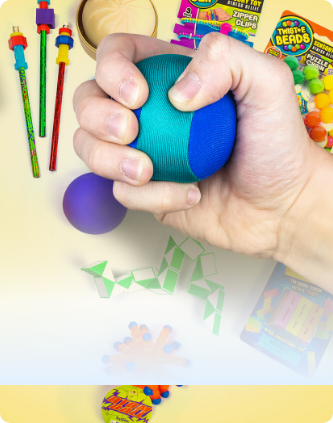Tips for Preparing Your Child for Halloween
Oct 1st 2019

Halloween is right around the corner and here are a few tips to help kids get ready. Happy trick or treating!
Trick or Treating Tips
- Trick or treating is exciting no kid wants to stop getting free candy. Create a schedule ahead of time for your child. Decide how long you will go trick or treating and when you will stop.
- Have something positive to go home to, perhaps a favorite snack or surprise gift to celebrate the end of the night.
- If you have a child with special diet concerns or severe behavioral issues talk to your neighbors ahead of time. You will be surprised how often neighbors want to help. Give them the treats your child can eat ahead of time so that your child can go trick or treating. Let them know about any sensory issues or concerns.
Prepare for a Meltdown
Remember exciting events can easily cause a child to become overwhelmed. This is sad for the parents and for the child so be prepared for it. Talk to your child ahead of time and see if they have any ideas on how to calm down. Here are a few ideas:
- As soon as you see that your child needs to take a break give them one.
- Keep with you a favorite calming item, like a vibrating pillow, small massager or fidget toy.
- Take along a piece of hard candy to suck on while watching a liquid timer.
- Maybe wear noise reduction ear muffs to minimize unexpected noises from other children.
Pumpkin Fun
Carving a pumpkin can be a fun Halloween activity. For children with fine motor or sensory issues here are a few alternatives to using a knife:
- Poke holes in the pumpkin and let your child decorate it using Mr. Potato Head pieces. This is fun and can allow your child to change the way the pumpkin looks several times leading up to Halloween.
- Paint your pumpkin. For children with fine motor challenges you can draw a mouth, nose and eyes and let your child paint on the details.
- Decorate your pumpkin by gluing on pieces of felt, construction paper, feathers, cotton balls or whatever else you and your child can think of.
The Costume
For those children who have a favorite character they enjoy dressing up as, it's easy let them wear their favorite costume. For other children you may need to take into account sensory issues. Remember the face is a very sensitive area of our body. Many children with sensory challenges can not tolerate face paint, wigs or masks. Remember to cut off tags and be sure to let your child feel the material and approve it before purchasing a costume.
Simple Sensory Friendly Costume Ideas
- A soft t-shirt with the words: "This is my costume"
- Let your child dress up as a "Smartie Pants" using a favorite pair of pants with "Smarties" candies taped all over them.
- Dog Catcher - Let your child wear their favorite shirt with a name tag that says "Dog Catcher" then place a small stuffed dog with his head peeking out of their trick or treat bag.
Prepare for the Night
Schedules can reduce anxiety and help your child transition through the evening. Decide when the child will get dressed, when they will eat dinner, when they will go to a party or trick or treat. Write out the schedule and keep it handy so that your child can refer to it as needed.
Create a simple social script your child can follow. It can be as simple as this:
- Ring the doorbell.
- Say Trick or Treat, or hold up your Trick or Treat sign.
- Let the neighbor put candy in your bag.
- Say or sign "thank you".
Know and follow the safety rules.
Create a few safety rules that are important for your child and review them ahead of time before the big night. Some safety rules in our house are:
- Hold hands while crossing the street.
- No running in your costume.
- Always wear your glow necklace.
- No candy until we go home.









